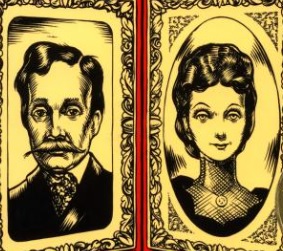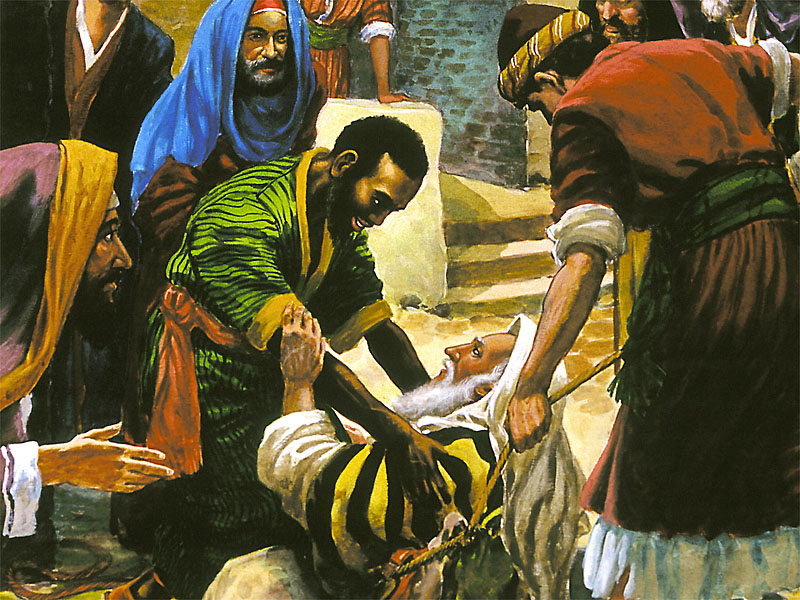Our family began picture study years ago when our oldest was just starting homeschooling. Much of what I know of picture study I learned from Karen Andreola in her book A Charlotte Mason Companion, so I cannot take credit for the idea in any way. If you have never read A Charlotte Mason Companion, please take time to do so. You will find so many ideas to enliven your homeschool. It is a book I have come back to over and over again.
Some of the first artists that we started studying were Mary Cassatt and Pierre-Auguste Renoir. Another early favorite of ours was John James Audubon, because he depicted not only the birds we can see at our backyard feeders, but also those we may never have opportunity to see in the flesh. In later years we studied others whose names and works were less familiar to me, including Berthe Morisot and Hiroshige (but they are familiar to me now).
Charlotte Mason suggested that students study six prints of an artist’s work over the span of a twelve-week semester. The Picture Study Packs we are producing will have ten prints in them, so that a mother may choose among them. Having ten prints available also allows a family doing nine-week quarters to use a different print each week, if desired. The reason to study one artist in the span of a quarter or semester is so a child will become familiar with the style of a particular artist. He is not seeing Peale this week and Millet the next, but seeing Cassatt, followed by Cassatt, followed by Cassatt. Just as an author has a voice, an artist has a style which is recognizable, able to be distinguished from that of another artist.
Picture Study is very simple to implement (especially if someone has already done the work of compiling worthwhile prints for you! ). 🙂 Just do the following:
Choose an artist that you and your children would like to study for the quarter or semester.
- Prominently display one of his works for one to two weeks.
- At some point that first week, give your child a brief introduction to the artist (such as when and where he lived) and share the title and medium (whether it was oil, watercolor, etc.) of the work you are featuring.
- At the end of the one to two weeks, replace the first image with another. Continue replacing works until you have covered at least half a dozen works by the same artist. (There have been times we have not been able to find enough quality prints by the same artist, in which case we have combined artists arranged around a time period or theme. There will be some sets like this in the Picture Study Packs, because even when an artist was prolific, only certain of his works may be available or useable.)
- You may wish to occasionally draw the child’s attention to something in particular you know or appreciate about a print, but you can also allow the child to be forming some connections of his own and encourage any observations he may make about a picture (Mom, the way the little girl is sitting for that portrait is just like the pose of the lady in the one we studied two weeks ago!).
- At the end of your semester or quarter, allow each child to choose a favorite picture to narrate for you. He may describe the picture in detail or replicate the work on paper to the best of his ability. Save these narrations and drawings! Your children will love to look back on them in years to come and see how their descriptive and artistic abilities have grown. And, if your child or family has a timeline book, this is an excellent time to add a page on the new artist.
That’s picture study in a nutshell (at least that’s the way we’ve implement it – for more detail and additional suggestions, please see CM Companion mentioned above). We’ve found it profitable over the years. The children have favorite works of art that we’ve never seen in a museum, but that they’ve enjoyed seeing in our kitchen. One of my daughters mentioned to me just lately that her interest in the hand spindle actually came about from the picture study of Millet’s The Young Shepherdess many years ago.
One thing I do want to stress about picture study is the point of teaching a child to recognize and think on that which is good and beautiful. If we teach our children to be familiar with (may I even say “befriend”) that which is lovely when they are young, we will be setting their feet in the right path to appreciate and seek out appropriate pieces of art when they are grown. Even some of my favorite artists created pieces I have seen in passing that I would not be comfortable sharing with my children or dwelling on myself. Sometimes the artists have past sins or worldviews that are problematic, as well. When I do picture study, I am careful to let my children know that even the best of artists was only a fallible human, as are we, and that we are going to focus on what he got right. I don’t share much for details on an artist’s personal life or worldview (unless I know the example set to have been a worthy one), because that’s not why we’re studying art. We’re studying art so our children will learn to appreciate beauty and be inspired themselves to create that which is pleasing to God and edifying to others (whether that be with paintbrush and palette, with pen and paper, with an instrument, or with a hammer and nails).
If you are interested in implementing picture study with your family, please check out the Picture Study Packs on our website. They have been created to save Mother the time of searching out appropriate prints. The works of a given artist have been specifically selected to feature only those works which are worthwhile to think on. You will not find nudes or extraneous violence or perversion included here. The prints are done on letter size, lightweight cardstock, so they are sturdy enough not to wrinkle too easily, but light enough to hang with a tack or magnet. They are approximately three times larger than the postcard size prints that are readily available (and which is all that was available for many years, short of purchasing individual giclée prints from art sites, which would be cost prohibitive for most families).
Enjoy learning alongside your children. Even if you never studied art in school, you can begin to teach your child to appreciate “whatsoever things are lovely”. Then, as your interest (and theirs) grows, begin to study some art terms together (introducing one here and there, perhaps alongside a picture that demonstrates it). This will enable you to understand more fully and speak more precisely about the pictures you study. If you are very courageous, you can even encourage your children to try out new art terms. I will never forget the day I decided to teach the children about pointillism with Q-tips for paintbrushes and paper plates for palettes. In addition to the older children, there were three toddlers in the house at the time and I didn’t see why they shouldn’t learn about pointillism, too (ah, the folly of youth) … suffice it to say they all ended up in the bathtub! Our children still remember that art lesson though. 🙂
![]()
Copyright © 2015












